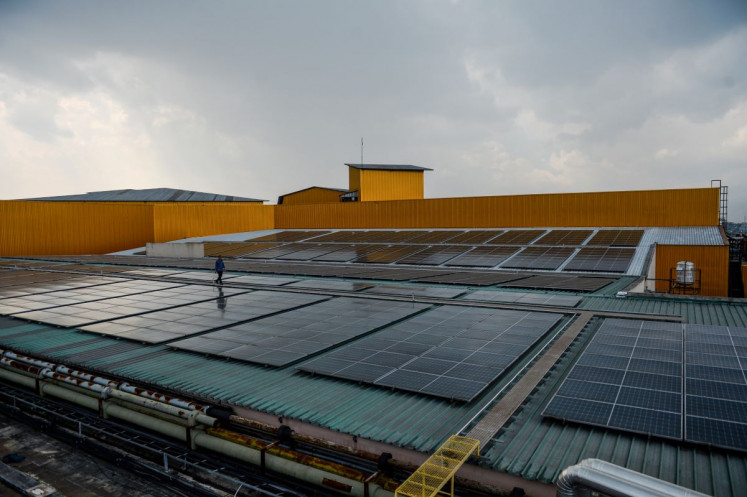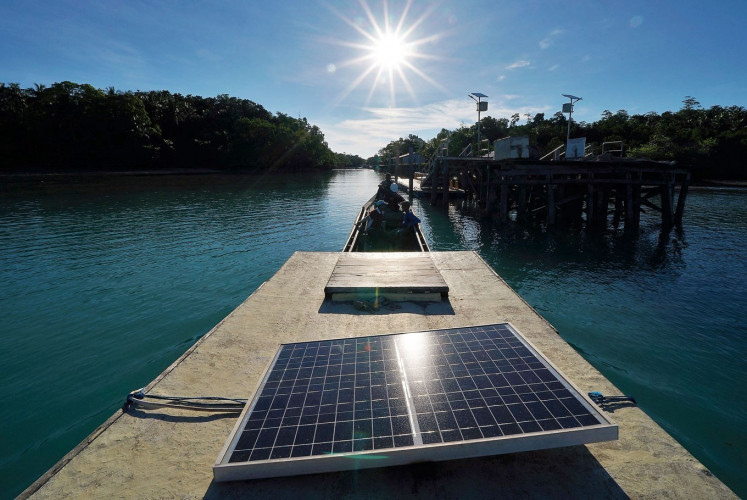Popular Reads
Top Results
Can't find what you're looking for?
View all search resultsPopular Reads
Top Results
Can't find what you're looking for?
View all search resultsHolcim's profit dips as construction projects slow
Major-cement producer Holcim Indonesia posted a slight dip in its first half (H1) net, which it attributed to rising costs and a slowdown in the construction and property sectors
Change text size
Gift Premium Articles
to Anyone
M
ajor-cement producer Holcim Indonesia posted a slight dip in its first half (H1) net, which it attributed to rising costs and a slowdown in the construction and property sectors.
Holcim also announced on Wednesday that H1 sales grew modestly by 10 percent to Rp 4.93 trillion (US$425.83 million) compared to the same period last year.
That represents stronger sales growth compared to year-on-year 7 percent growth in H1 last year.
Despite the sales increase, Holcim fell short of boosting its net profit, which dropped by 3.79 percent to Rp 449.41 billion in H1, from Rp 467.14 billion in the same period last year.
Asjaya Indosurya Analyst William Surya Wijaya said that Holcim's sluggish performance was in line with a slowdown in the cement industry.
'Among the challenges are rises in electricity rates, minimum wage hikes and surging losses on foreign exchange [forex], attributed to rupiah depreciation against the US dollar and imported material, William said.
'Holcim had to deal with surging costs that restrained its bottom line from growing.'
As of May 1, the government raised electricity rates by either 38.9 percent or 64.7 percent, depending on businesses' power needs. The increases, however, will be gradual until the end of the year.
Holcim ' which must deal with a 64.7 percent increase in electricity rates ' recorded an increase in costs of sales to Rp 3.45 trillion, while its operating costs went up by 15.87 percent to Rp 728.23 billion.
In addition, its H1 forex losses surged to Rp 27.57 billion, compared with Rp 10.27 billion in the same period last year.
Holcim has gradually increased its selling prices since late last year to mitigate its rising expenses.
Holcim, along with other industry players, also had to bear weaker property and construction demand, which saw project delays as a result of the legislative and presidential elections, as well as unfavorable regulations and macroeconomic conditions.
Holcim president director Eamon Ginley previously said that despite a number of obstacles this year, his company was optimistic it would at least secure a higher annual revenue compared to last year's figure, assisted by a boost in capacity from its Tuban facilities.
The company invested $800 million to construct Tuban 1 and Tuban 2, both in East Java.
Each of the two factories can produce up to 1.7 million tons of cement per year.
Tuban 1 began operating in October 2013, while Tuban 2 is due to commence operations in the first quarter (Q1) of 2015.
Apart from the Tuban facilities, the company and its subsidiaries have a total annual production capacity of 8.2 million tons of cement in Indonesia and another 1.2 million tons in Malaysia.










